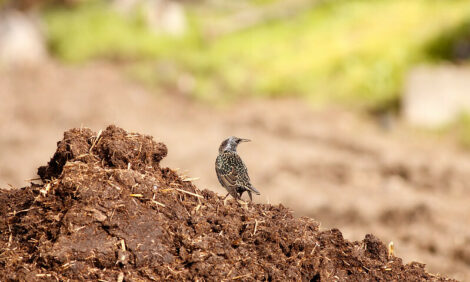



Refined carbs show promise as ‘sentinel’ for Salmonella control
Higher government standards for Salmonella control have put more pressure on poultry companies to reduce incidence on broiler farms and lower the pathogen load going into processing.Vaccination of broilers for the bacterium has skyrocketed over the past 2 years, but other tools and management practices — good sanitation, rodent control, litter management, stepped-up biosecurity and feed additives — are also critical.
Grayson Walker, a DVM candidate at North Carolina State University, spoke with Poultry Health Today about the research he’s done on a feed additive that he said can serve as a “sentinel” for Salmonella control.
He explained that appropriate enzymatic hydrolysis of yeasts — a process where enzymes facilitate the cleavage of bonds in molecules with the addition of water — has been used to produce refined functional carbohydrates (RFC) that have activities against Gram-negative bacteria.
Specifically, these products possess sugars that interfere with Salmonella attachment to the intestinal lumen.
“Yeast-cell walls have been used as a feed additive for quite some time now,” Walker said. “They have nutritional and immunological effects that have been demonstrated, mainly due to the complex of sugars in the yeast-cell wall. If you subject this complex to…an enzymatic hydrolysis process, you can selectively expose the sugars that Salmonella actually used to colonise animal and human intestines.
“These sugars out-compete the intestinal carbohydrate receptors and intestines for Salmonella to bind to. It’s a way to inhibit intestinal colonisation of Salmonella,” Walker continued.
Testing the theory
Walker’s master’s project at North Carolina State evaluated the feed additive at different stages of poultry production in three trials. He feels it’s important with a pathogen such as Salmonella to have an integrated, multifactorial control approach. The first trial was with broiler breeders through an entire rearing period; the second experiment investigated chick-progeny intestines; and the third experiment further investigated RFC effects on Salmonella proliferation when fed to broilers.
In all three trials, when diets were supplemented with the RFC additive (Celmanax) throughout the growing process, Salmonella were reduced, he reported at the 2018 America Association of Avian Pathologists conference.
Salmonella were not detected in hens fed a RFC diet, while control-fed hens were confirmed 71.4% and 40% positive for cecal Salmonella at 23 weeks and 64 weeks, respectively.
“We were unable to find Salmonella in the GI tracts of breeders that were fed this additive, and we found it had the same effect in the broilers,” Walker said.
In Trial 2, Salmonella were not detected in progeny-chick intestines upon hatching; and in Trial 3, Salmonella Senftenberg was isolated in 14.6% of the litter of control-fed broiler pens and not isolated in the litter of RFC-fed pens using novel litter-sampling methods.
Management still key
“Salmonella is one of those issues that we can significantly impact on a human-health level by also managing our animals appropriately,” Walker said.
For veterinarians and producers, Walker said it reinforces the idea of using best management practices and proper sanitation to reduce pathogens that can affect humans.
“While this product does indeed reduce Salmonella colonisation in live animals, you have to have good control on your Salmonella problem before you go into it. This additive is more like a sentinel system: It should be used as a precaution, not so much as a treatment,” Walker said.
He added that it’s still important to use good management to keep Salmonella levels as low as possible.









